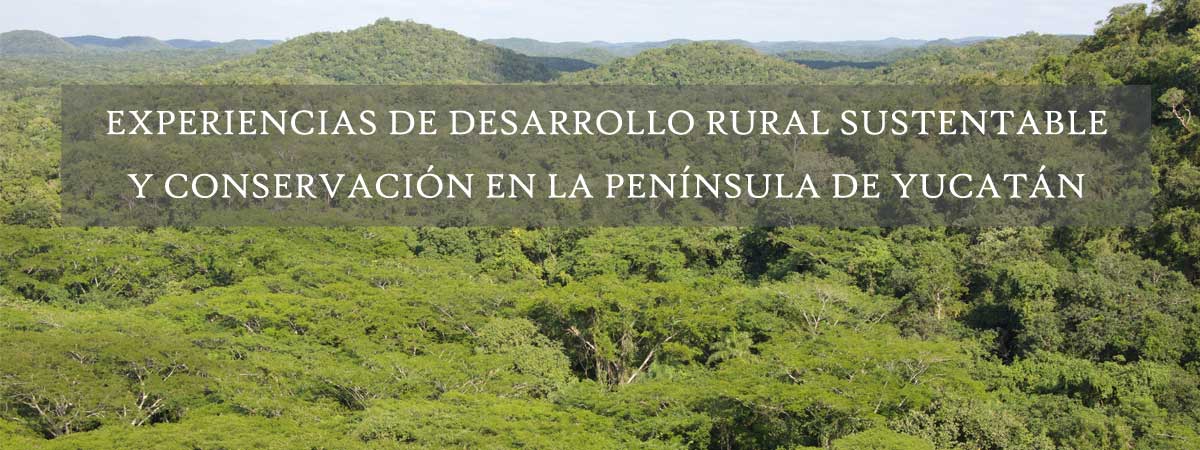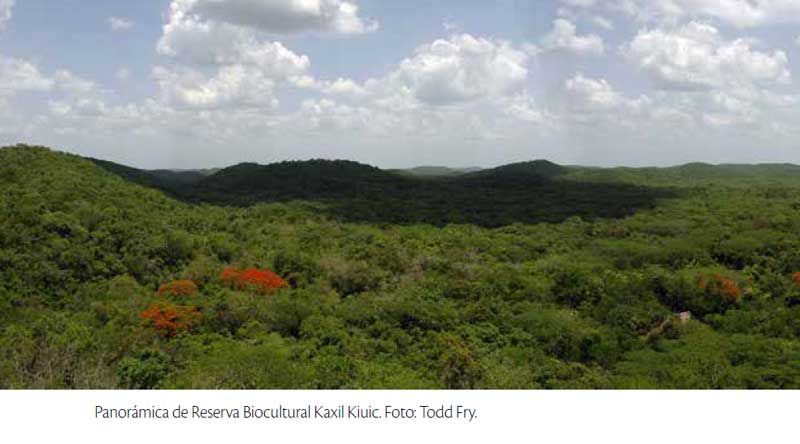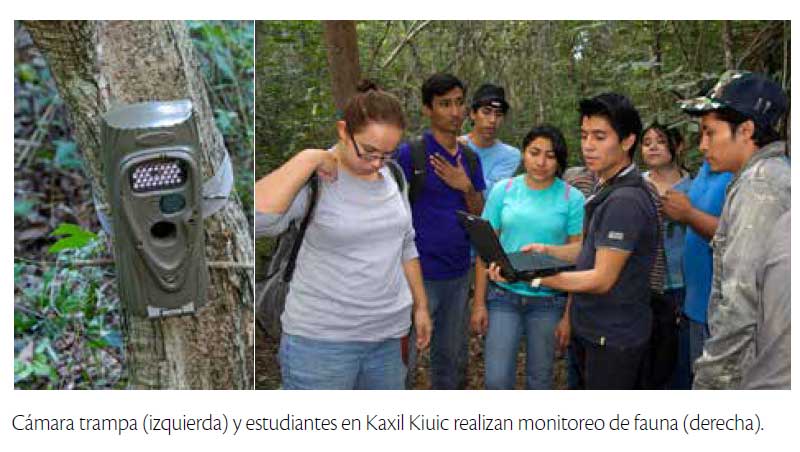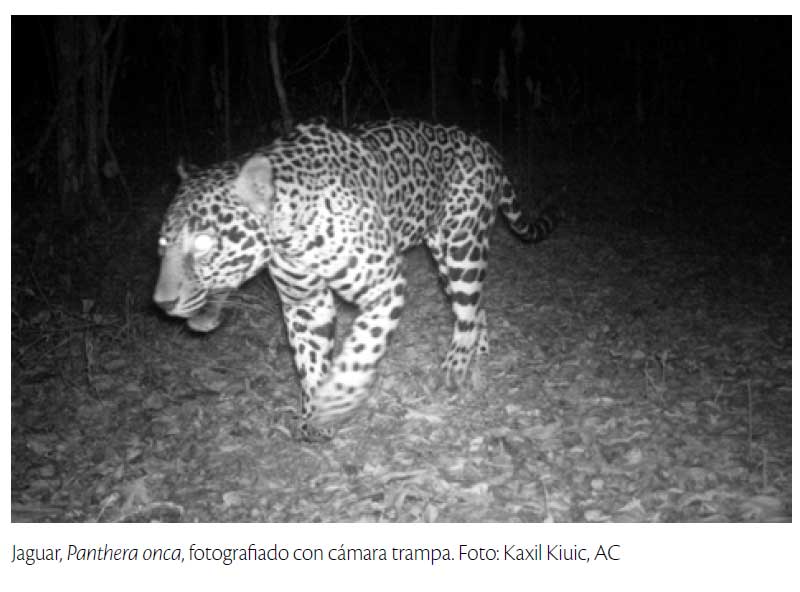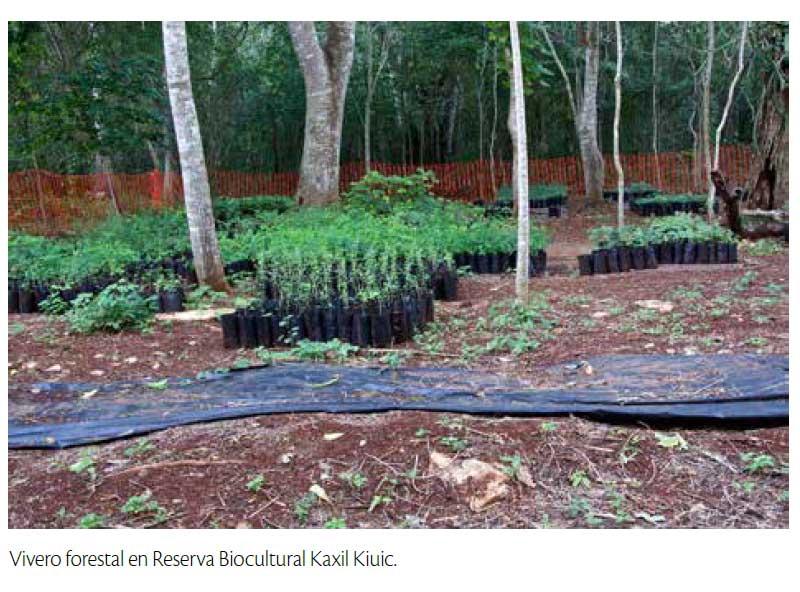Monitoring jaguar and its prey in the Kaxil Kiuic Biocultural Reserve

Meeting point in the forest, or K'aax in Mayan, and its archaeological site called Kiuic are the origins of the name Kaxil Kiuic Biocultural Reserve of 1,642 hectares, located in the heart of the Puuc Biocultural State Reserve. But its value is not only for its historical heritage, but also for its natural capital, since it has a medium semi-deciduous forest in good condition and high biological value. Proof of this is the confirmed presence of the five feline species cited for the Yucatan Peninsula, including the mythical jaguar. It also has 19 cases of endemism, including two species of amphibians, five reptiles, nine birds and three mammals (Callaghan and Pasos 2010).
In this context, and together with Dr. Markus Tellkamp, from Millsaps College at the time, and biologist Ricardo Pasos, the "KKBR Wildlife Monitoring" program begins in 2005 with a reduced number of trap cameras and the objective to determine and record the species that make use of the habitat. In 2008, with funding from Millsaps College and in collaboration with Biocenosis AC, the sampling effort increases and begins a large data collection of the fauna present in the reserve. Among the earliest finds was a female puma using the land as a breeding site, as it was photographed repeatedly and at different stages of gestation, even with its offspring. However, it is in 2010 when the most anticipated photo is captured, a female jaguar. That's when a strategy to increase the sampling effort started, with a standardized methodology for big felines and their prey.
With sufficient funds raised to purchase trap cameras and the necessary equipment, the project "Jaguar Conservation in the Puuc" starts in 2013 and monitoring jaguar and its prey is defined as the initial objective by Kaxil Kiuic, with the participation of neighbors with private land to the north and the San Agustín ejido to the south. For the sampling design, and by recommendation of experts in the study of jaguars, the CENJAGUAR methodology was adapted according to the features of the reserve's landscape, based on the assumption that it presented similar low densities to the north center populations of the peninsula, compared to Southern populations. In that sense, they created alliances with various organizations working under the CENJAGUAR scheme to homologate more appropriate monitoring methodologies that allow the obtained data to be comparable.
Once the project started, in the first sampling season of 2013, five jaguars, eight pumas and a high number of ocelots, in addition to other important mammals such as deer and collared peccary were identified; but in 2014 the cameras did not have records of jaguar. On its second year two new obstacles arose, financial resources to continue to project ran short, and the main investigator from Millsaps College on the reserve, Dr. Markus Tellkamp, leaves the college. This causes a slowdown in the project, which regains momentum in 2014 with the forum developed in Cancun in which an initiative called "Jaguar's Voice" is born. In this event, several organizations allied for the study of this species in the Yucatan Peninsula, adding momentum to this project at a regional level. The Kaxil Kiuic Biocultural Reserve has always had an educational component and a link with nearby communities. Many inhabitants of the region have been benefitted from temporary jobs and many owners of neighboring lands ask to be included in the monitoring program. Private and ejido neighboring properties are a fundamental part of the landscape, and must be included in the initiative, mentions Callaghan. Obstacles arise with poachers that do not hunt for subsistence; in this sense the project is beginning to establish collaborative strategies with them. Among the strategies, and in the context of REDD+, a nursery of wild species of economic and ecological importance is strengthened for landscape restoration in communities of the area (see box). Thus, some hunters and relatives of organized groups have already approached and expressed their interest in establishing cooperation agreements in order to be benefited with plants produced in the KKBR and integrate them into their silvopastoral and agroforestry systems. "We believe that through dialogue and in the exchange of useful resources we build community. And we have to build community, we are neighbors," concludes James Callaghan.
Agricultural and forest landscape restoration in the area of the Puuc Biocultural State Reserve
Bibliography Callaghan, J. M. y Pasos, R. 2010. Reserva Biocultural Kaxil Kiuic. Biodiversidad y Desarrollo Humano en Yucatán: estrategias para la conservación. |
